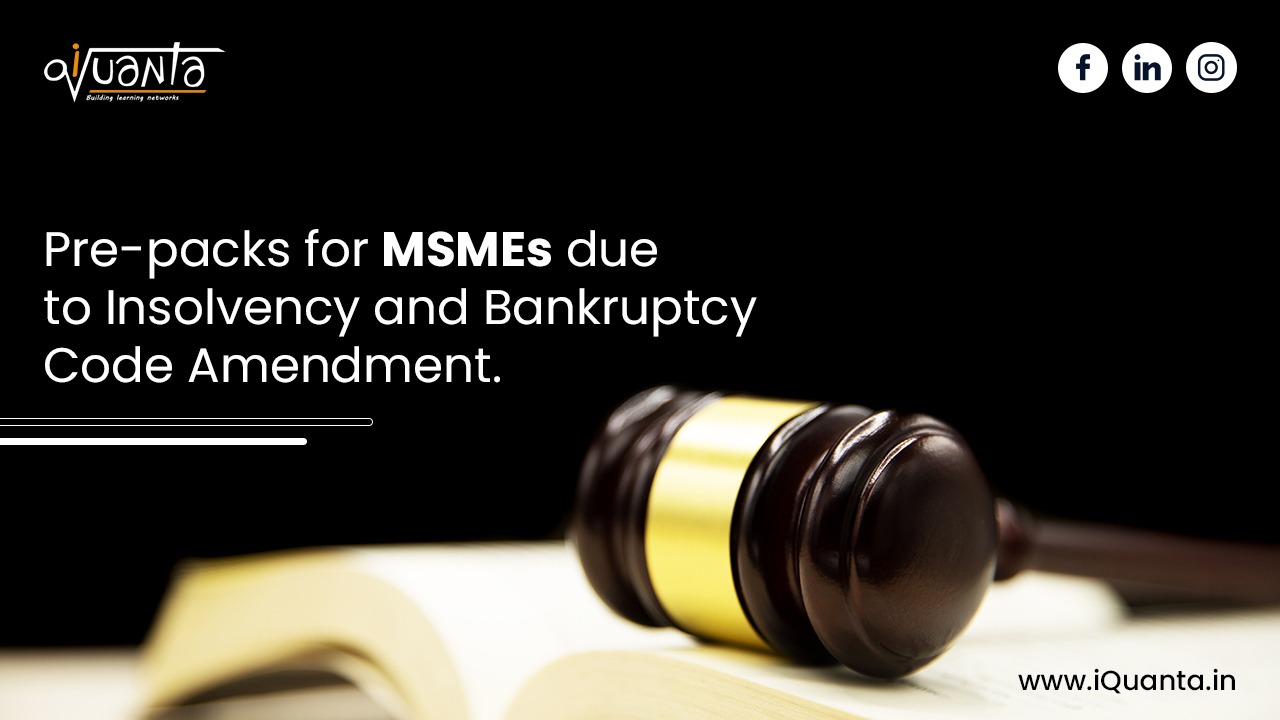Insolvency and Bankruptcy Code amendment act 2021
Recently, the Insolvency and Bankruptcy Code (Amendment) Bill has been introduced in Lok Sabha. This bill has proposed another insolvency resolution mechanism for Micro, Small and Medium Enterprises (MSMEs).
Now, there are two mechanisms of insolvency resolution, namely, the Pre-packaged Insolvency Resolution Process (PIRP) and the Corporate Insolvency Resolution Process (CIRP).
Pre-pack will involve a direct agreement between creditors and the existing owners or outside investors instead of any public bidding process.
In order to resolve the debt of a distressed company, the financial creditors will agree to terms with the promoters or potential investors. Once done, the resolution plan has to be approved by National Company Law Tribunal (NCLT).
The approval of at least 66% of financial creditors that are unrelated to corporate debtors would be required. Once submitted to NCLT, it can either accept or reject any application for pre-pack insolvency proceedings.
Why Pre-packs over CIRP?
In the case of CIRP, the major issue is the time of resolution. This is due to prolonged litigation by promoters and potential bidders. The threshold is 270 days but the majority of cases have breached that threshold.
The pre-pack is limited to a maximum of 120 days with only 90 days available to different stakeholders involved in order to bring a resolution plan before the NCLT.
Another important difference is that in the case of pre-packs, existing managers retain control while in the case of CIRP, a resolution professional takes control of debtors as a representative of financial creditors.
Pre-packs are introduced to help MSMEs to restructure their liabilities and start with a clean slate while providing protections. It will ensure that it can’t be misused by companies to avoid making payments to creditors.
Swiss Challenge
The pre-pack mechanism allows for a ‘Swiss challenge’ to any resolution plan which involves less than full recovery of dues for operational creditors.
Under this challenge, a third party will be permitted to submit a resolution plan for the distressed company. The original applicant will be then left with two choices, either to match the improved resolution plan or let go of the investment.
Challenges
The challenges include that forensic audits will be important for cases where the same management has control. Where haircuts are involved, such audits become important and negative reports can be a roadblock for the resolution process.
Also, the timeline will be difficult for lenders and distressed companies to meet.
If an outstanding debt is resolved through PIRP, the NPA status of the company’s account with lenders may not be automatically upgraded under RBI guidelines. There is a need for the IBBI and RBI to find a middle ground on these regulations.
Lastly, the pre-pack mechanism is effective to make the resolution process quickly and it can be rolled out to all companies over time.
To structure your CAT online preparation in an efficient way consider joining iQuanta which is a top online cat coaching institute and being a part of the iQuanta CAT 21 Course. You can also check out and be a part of their Facebook group for peer learning, doubt solving and free material.




